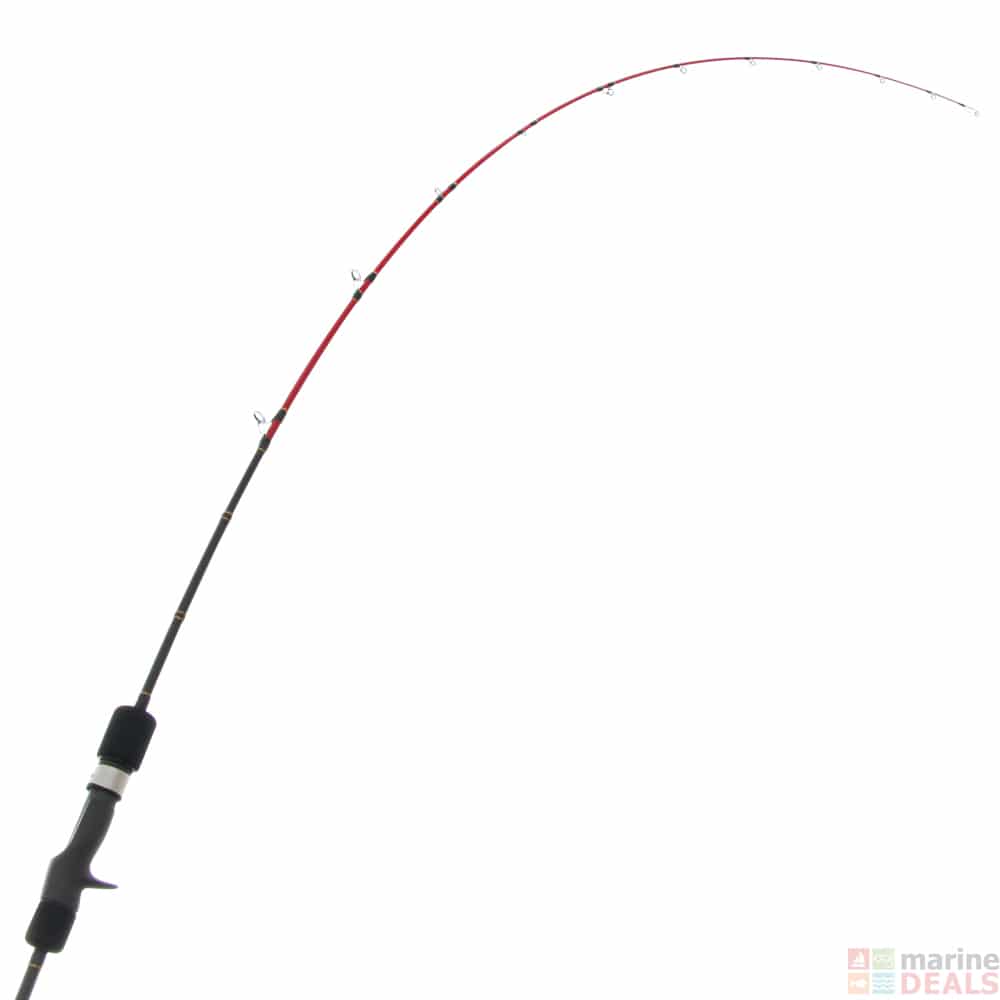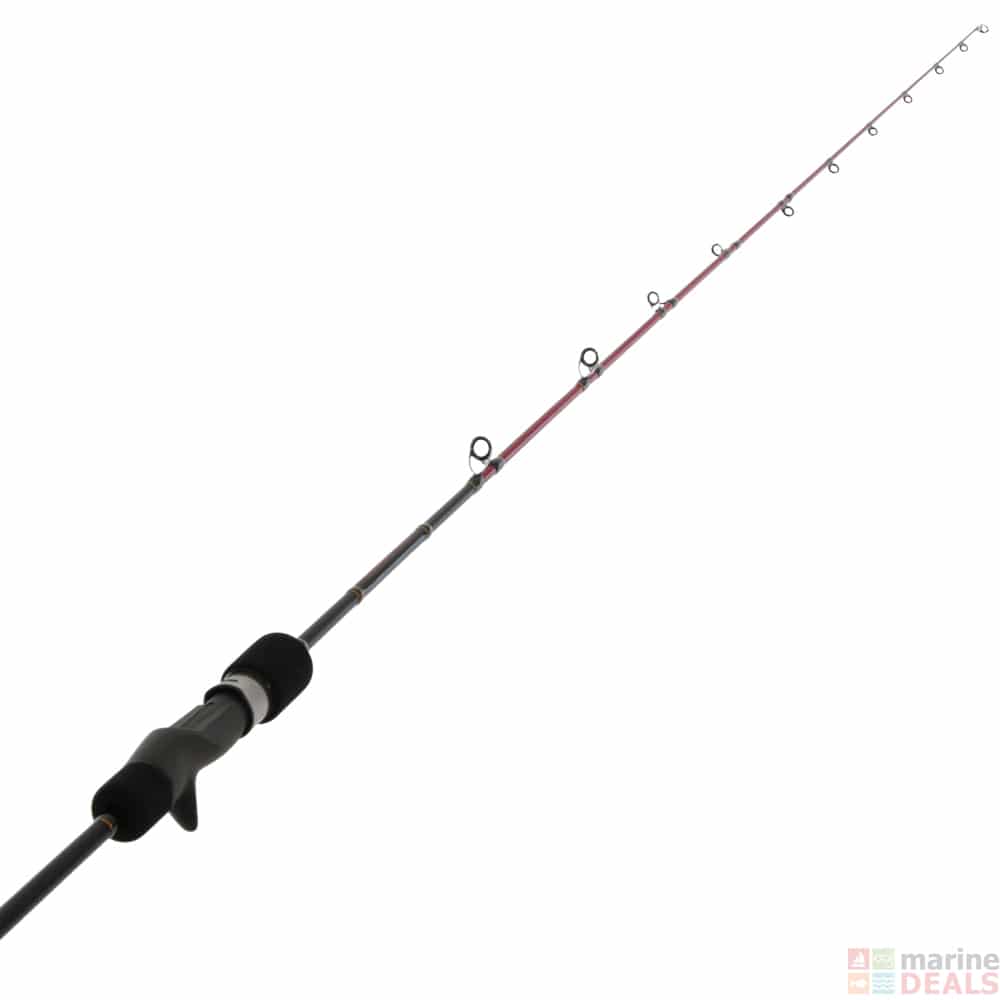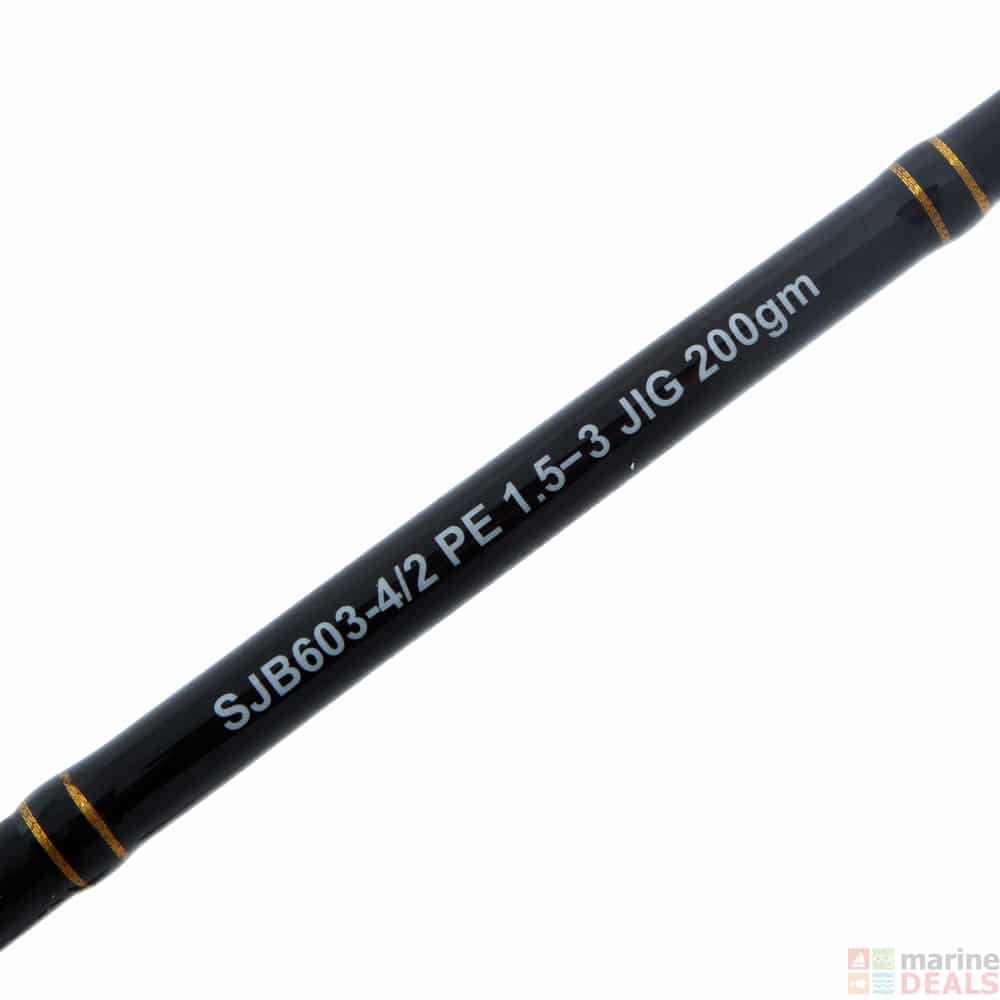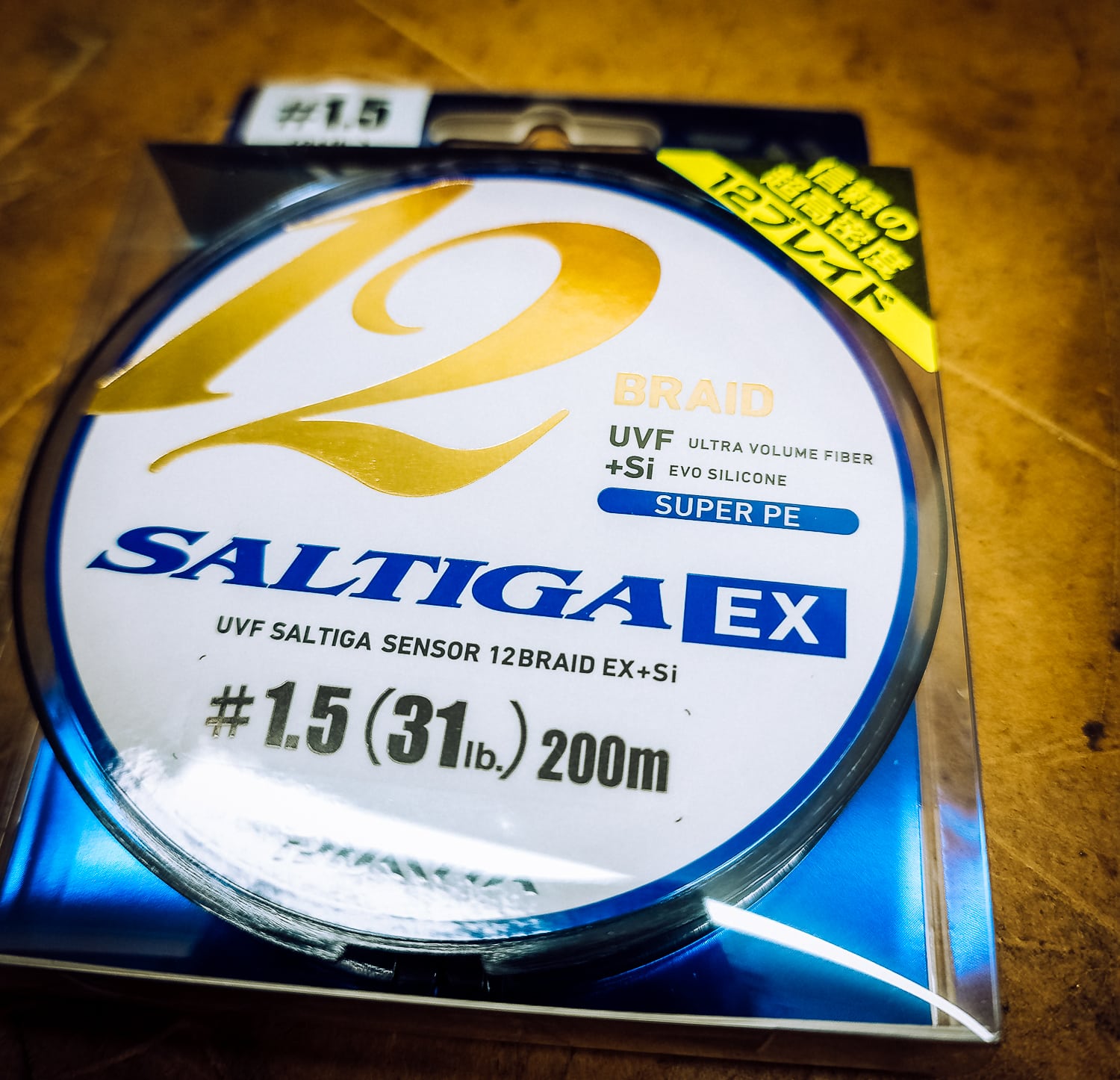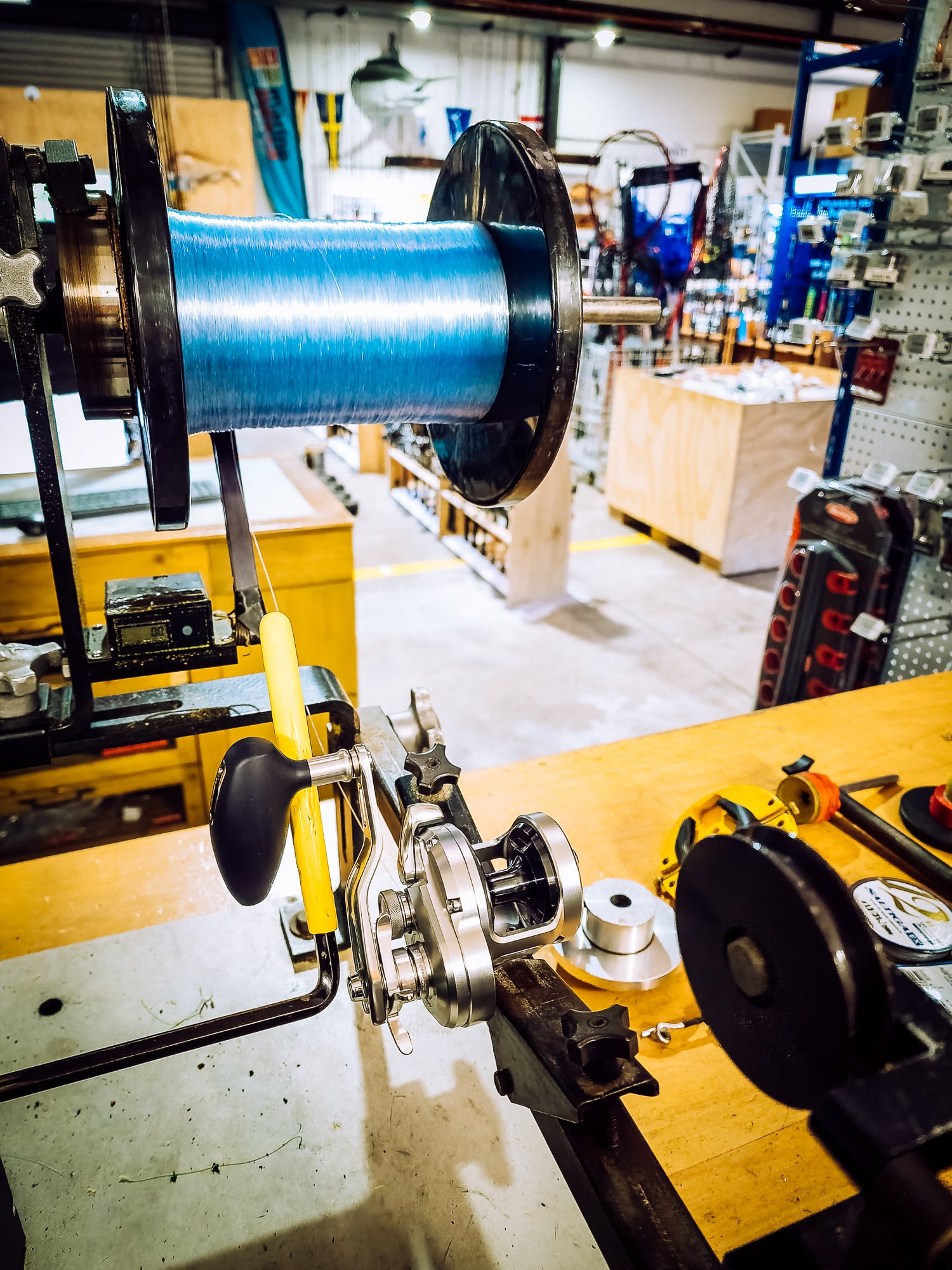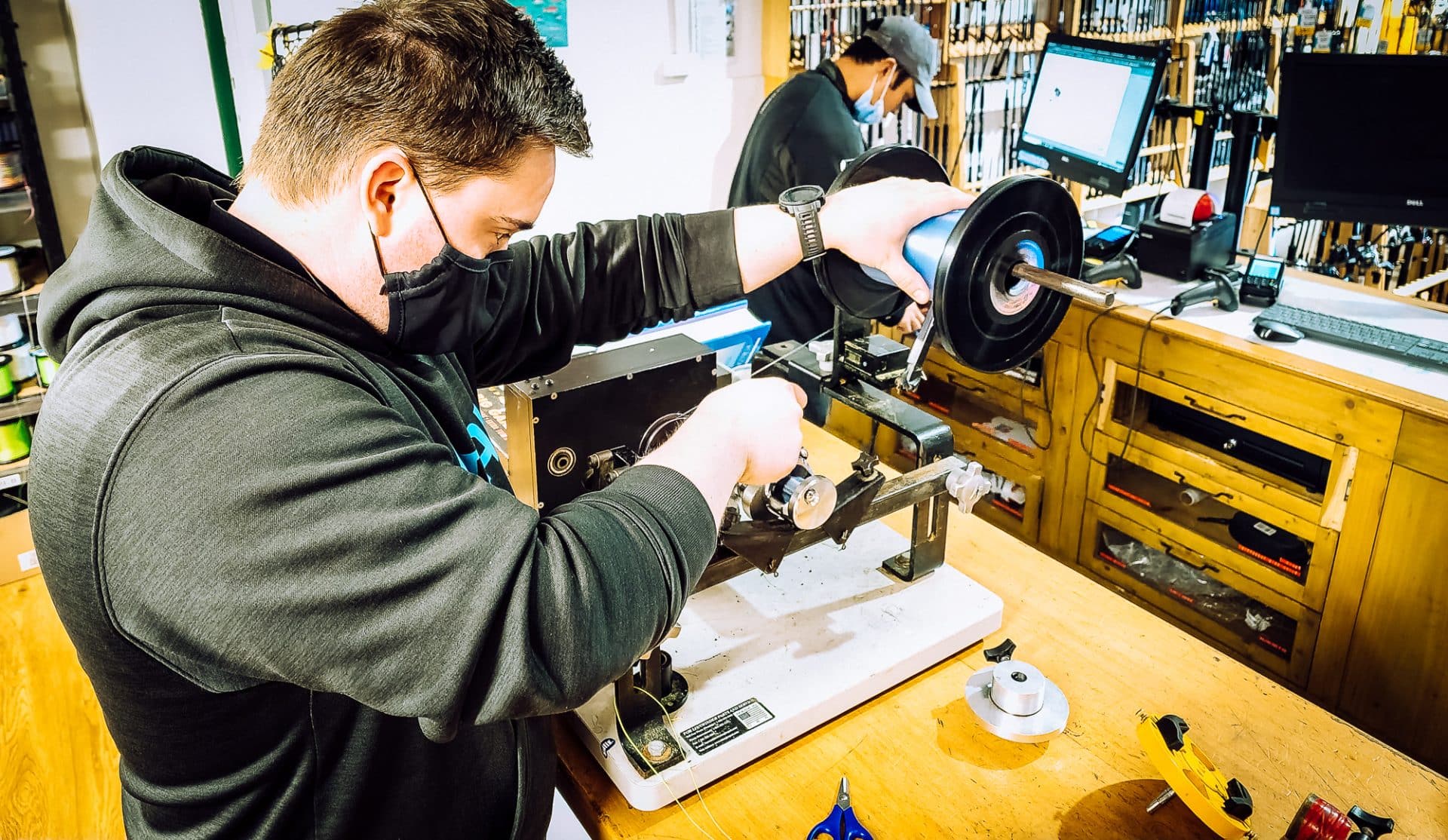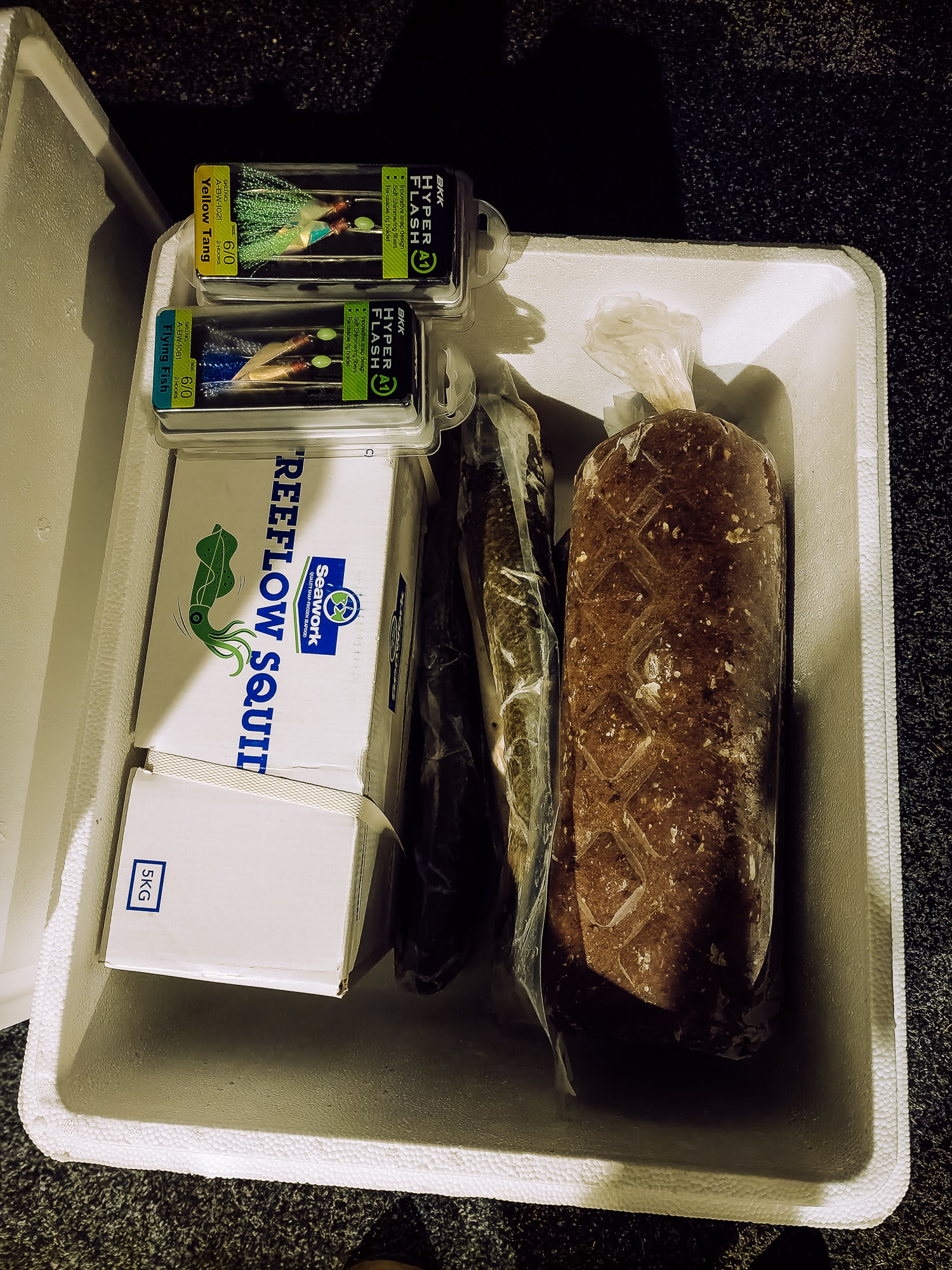
Since my trip out with the lads from Okuma, my eyes had been properly opened to fishing without bait – using lures instead.
Specifically, I was keen to give Slow Pitch Jigging a go. It’s something I had been reading about online and devouring videos on.
What is Slow Pitch Jigging?
Well. Like many things, the terminology can get a little confusing, depending on who you talk you. From what I understand, what is being called Slow Pitch Jigging (or Slow Pitch) in NZ, is the same as what the Japanese sometimes simply call Slow Jigging. I have also seen it referred to as Slow Jerk as well.
Essentially though, as I understand it, the focus is on the drop of the lure and the way it flutters back down, rather than the fast erratic movement as it is pulled up through the water. The lures and designed to maximise flutter down, rather than dropping fast through the water. The idea is to mimic the actions of an injured or dying fish – i.e. easy takings for any fish in the area!
What appeals to me in regards to Slow Pitch Jigging is both the apparent success, but also the slower, much more peaceful workout at the angler’s end! That fast pitch jigging looks like too much work!
While it’s fair to say it’s only just starting to properly take off in NZ, it isn’t new, either here, or, in the home of it – Japan. Like in many things the Japanese took an idea and refined and refined it until mastery.
The Gear
Yes, of course, there is specialist gear. And while I don’t get the opportunity (yet!) to be out regularly trying every option back to back (not many people really get to do that) – I do have the luxury of being able to grab multiple items, and set them on the desk to ponder, play and generally ruminate over.
So, I knew I was going to need a rod and reel, and slowly worked through all the reviews online, videos, forums and so on. I finally settled on a combination of the Shimano Ocea Jigger 1500 HG Jigging Reel, sitting on a Jig Star Slow Jerk Acid OH Slow Pitch Jigging Rod – loaded up with Daiwa Saltiga EX 12 Braid in PE 1.5 diameter.
The Reel
I went back and forth quite a few times between reels. It was originally a toss-up between the Accurate and Maxel – with the Maxel Hybrid actually catching my eye. Maybe it’s due to not using them as much, but I am still a little wary of the lever drags – I knew I would be dropping the line back down quite regularly – and really liked the idea of the Hybrid’s Thumb bar spool release meaning I could essentially operate the reel one-handed. Of course, then it actually dawned on me – the Ocea Jigger wasn’t actually a Lever Drag anyhow! It’s the one reel that had come up time and time again online – and handling all the above three reels – the Shimano certainly seemed to have a much smoother feel and operation. I have already realised a lot of this is going to be a bit of personal preference – and can certainly see the ‘built like a tank’ aesthetic of the Accurate Reels – but – maybe it’s the years of martial art training – but I have a weakness for certain Japanese sensibilities. So – Ocea Jigger it was. I opted for the 1500 over the 2000 size – as was keen to keep things light. Realistically though – the line ‘breaking weight’ of the PE 1.5 is still around 30lb – so it’s not like we are talking super light tackle here.

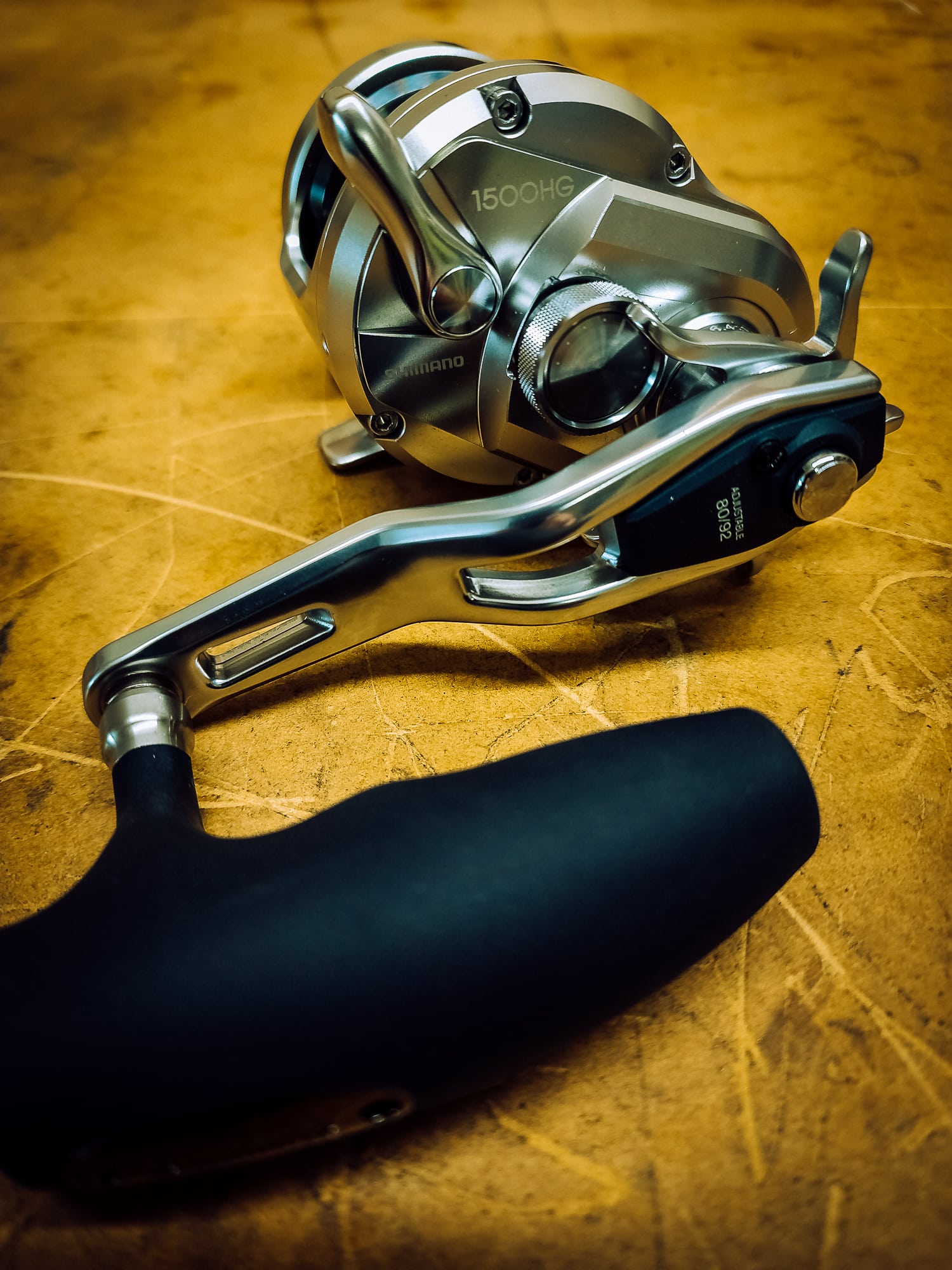
One suggestion I did read online – which I did immediately – was to replace the stock handle from the 1500, with a handle from the 2000 series1. It’s a larger, longer handle, so gives you a little more real estate to grip onto, and, more leverage to wind with. Which, for the way I understand I was going to be using it, made sense.
The Rod
Equally important – is the Rod.
I knew something was up when I found myself pouring over Japanese Videos late at night online2 – when I get into something, I go boots and all – and, to be fair, I was very, very close to an all Shimano combo – with the Ocea Jiggler Motive Rods being right up there on the list. However, in the end, I went with the Acid Wrap Guide3 Jig Star Slow Jerk. I think a Motive is still on the books – but would really like a Power 1 or 2, which at the moment, Shimano NZ doesn’t seem to be bringing in.
I liked the notion of the Acid Wrap on the Jig Star, which transitions from the guides on top of the blank around to the guides on the bottom. In addition, the weight class fitted into where I thought I wanted to start. As it turns out, the heavier side of things worked out the best on the first trip out!
Spooling
No, while I am learning, I still don’t know if I am the best person to be spooling up new reels, and besides, if you happen to have someone who can strip down and reassemble a Shimano Reel quicker than I can make a coffee4, then, well, you are going to step aside! After Alex spooled it up and gave me so proper tips on how to maintain and clean it, the only thing I was missing was some lures! I will report a bit more on those later.
Headed Out!
With the rig sorted, and a pile of theory in the head, an opportunity to test it all out came up. My brother’s neighbour invited us out onto the boat for a day out fishing. Cheers Rhys!5
The boat we were on (28 ft) was an ex-fishing charter boat – which I think our host had plunked a monster of a jet drive into. I won’t claim to know a huge amount about boats – but I did quickly note that this thing could get a hell of a pace on, but remain very smooth and comfortable in its ride – I think it was a combination of a relatively heavy boat and a huge amount of power under it.
There was basically a loose plan of heading out, dropping anchor and fishing with bait and burley. I had already committed to taking out the lures instead, so had the Slow Pitch Jigging rig, a soft bait rig and a topwater rig, just in case. As it turned out, only the Slow Pitch Jigging rig got wet, as it proved as effective as the lads with bait.
Location-wise, there were plenty of plans, but eventually, we settled on heading out to the 40m mark on Auckland’s East coast, dropping anchor, and getting ready to fish. While the lads were still prepping, I dropped over Catch’s 150-gram Boss Lure, and, very shortly afterwards, hooked up the first fish!
The summary of the day was a regular onboarding of decent pan-sized snapper. No monsters, no major frenzies – just enough constant action to keep everyone interested while enjoying the onboard BBQ and a few cold beers!
I managed to also bring up a Gurnard, and a couple of Yellowtail that got converted into bait.
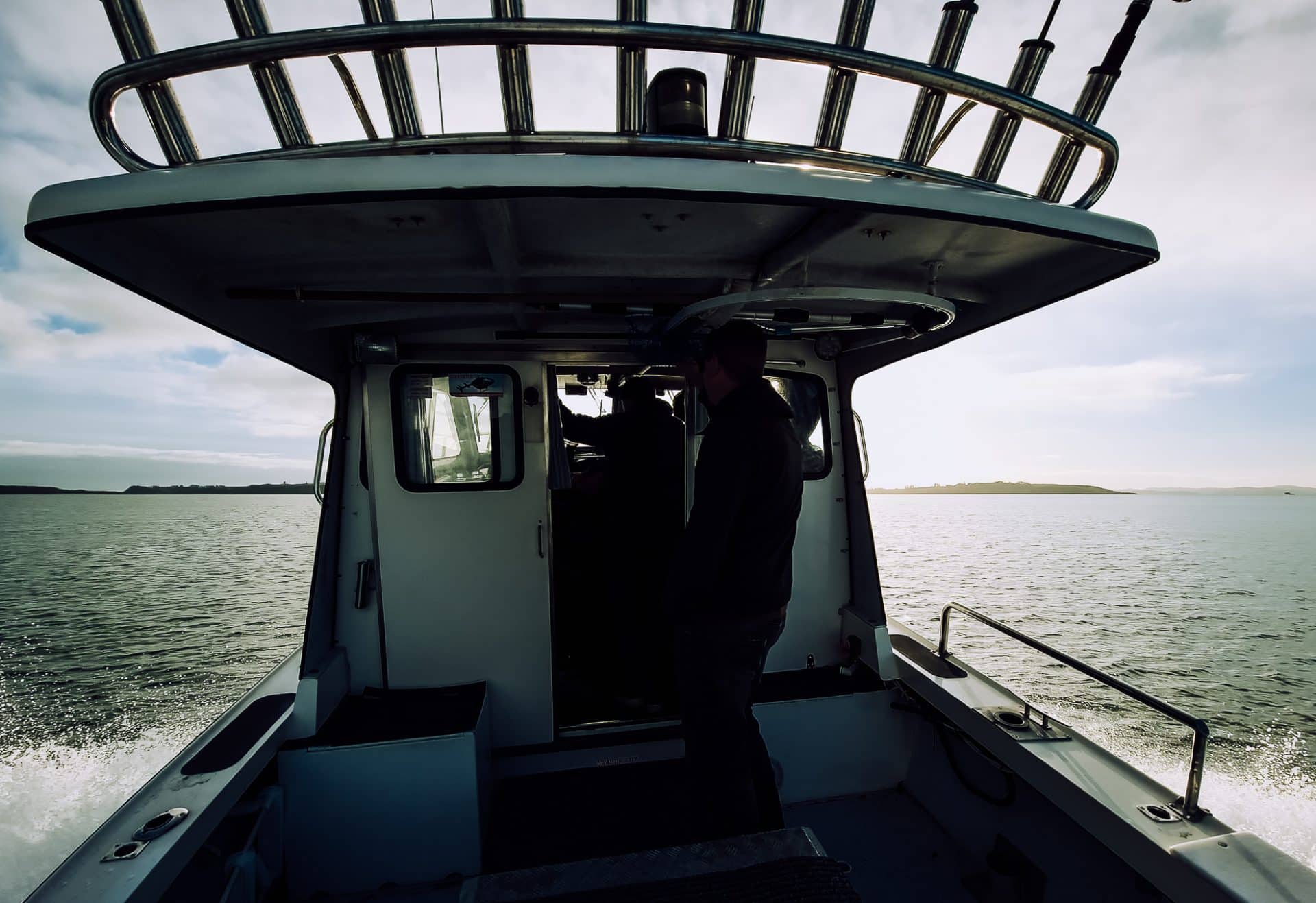
The Technique
Drop the lure, lift it up, and drop it back down. Easy aye!
Looking online there is a pile of different theories and resulting methodologies for this – but I have been following a lot of the Japanese Channels – namely Japanese Anglers Secrets and the Shimano Channel.
Essentially, the lures and the method of fishing them are focused on having the lure ‘flutter down like a leaf’ on the drop. This is achieved by a slow lift and then letting it free-fall back down. Some will use the high retrieve rate of the reel to do this, combined with the slow action of the rod, some will lift the rod, to various heights. Slowly low, slowly high, occasionally fast high. Watch enough videos and you will see all manner of ‘expressive’ pitching techniques – and I think that’s part of the attraction to me.
I was playing with both bringing the rod down fairly fast after the lure drops – allowing a real free fall of the lure and a pile of slack line – the issue I can see here though, is that you will have issues feeling any bites – and it’s more a matter of watching the line disappear back into the water – if it stops or pauses – something has had a go at the lure!
At the other end, is slowly ‘following’ the lure back down with the rod – this causes the opposite issue – if there isn’t enough slack to allow the lure to flutter, then it could just sink straight down – essentially negating the action of the lure and defeating the idea of Slow Pitch Jigging altogether.
I think there is a happy medium to be had here – not a pile of slack, but certainly not ‘tight’ on the follow either. The key is being able to still feel bits and be able to set the hook.
Hook Setting
Talking of setting the hook. This is not a style of fishing for folks who like to strike hard. As far as I have been able to ascertain – it’s more a case of a quick wind on the high retrieve reel (also an important feature in a reel, because of this) – which sets the small hooks for you.
I was generally running a larger set of assist hooks on the ‘top’ with a smaller set on the bottom. More than one fish came up with the main hooks in the mouth and the secondary set also lodged in further down.
It’s quite a few hooks on the end of the line – and I was very aware, that if we started pulling up undersize fish, it was time to drop the extra hooks in order to minimise the damage done to fish that were going back. As it turned out, that wasn’t much of an issue anyhow – as it was essentially a day of regular, decent pannie-sized hookups.
I did lose a couple though – and I think that was in part me trying to set the hooks a bit aggressively with the rod. A couple of times I would wind, get the fish on, then wind, feel the line go slack and instinctively pull up to try and set the hooks more – instead, I should have wound more and let the reel do the work. Talking of which.
Winching on the reel
Interesting, another difference from the way many of us are used to fighting fish – is that you don’t generally ‘pump’ and wind on the fish. Instead, you allow the parabolic curve of the softer rod to keep the pressure on the fish, and use the reel to wind it in. Good reels with good drag are obviously key here, with the Ocea 1500 working absolutely flawlessly on the day.
Working on Technique, working without fatigue
So, one of the appeals of this style of jigging was the less ‘strenuous’ methodology. Part of this is how you lift and drop the rod. Instead of pushing the rod butt into your armpit, it’s suggested you lay the butt along the inside of your forearm – sitting it into the fleshy part of the outer forearm – I was playing with this – but found it caused the rod to angle off quite far – I think this is also just a case of myself needing to practice more straightening up my rod arm, and coming over with the reeling hand to wind. I found myself coming more back to sitting the butt under the armpit – however – it still wasn’t a strenuous exercise – and I happily jigged most of the day without any discomfort.
It is certainly a more active style of fishing than rod-holder stray lining – which, depending on what your intentions out there were, might or might not appeal. It’s certainly harder to hold a drink, for example, while Slow Pitch Jigging!
I was also aware (I manage the service department at Marine Deals now, if you are still catching up) of some potential ways of damaging the new graphite rod I was holding – so found myself pulling the rod and jig up completely before grabbing a drink or food, not just leaving the jig in the water with the rod in the holder. I have already seen more than one rod come back in broken that way – and I can tell you – rod holder damage is not covered under warranty!

Jigs, jigs and more jigs
I did pick up a bit of a selection of jigs from the shop before headed out. I had a range of weights and styles to have a play with. I found myself rotating a bit through them over the day, though, it wouldn’t have been any more time than it took the bait guys to refresh or replace their bait. I simply left the hooks on the leader and switched the jig around on the split ring. A nice and simple and quick way of doing things.
I found myself coming back to the 150-gram Catch Boss time and time again. Because we were anchored up, instead of the recommended method of drifting when fishing jigs, I found my line headed down into the water at up to a 45deg angle. This is less than optimal for getting the right action on the jigs. However, I found the heavier jigs helped, and, also resulted in the recommended tip action from the rod – a slow return to straight when slowly pulling up the jig on the upstroke. I will get a couple of 200-gram jigs for next time to try as well I think.
Knot Work
I did manage to lose one jig – simply down, I believe to a badly tied a bad knot. I have been using what I call an improved UNI knot for the terminal tackle (i.e. the ring) – I am pretty sure that’s not the correct name for it – but it’s basically a UNI but passing the leader through and around the ring twice before beginning to tie it off.
I had actually landed a fish on it already, but something much larger took the line, and I lost it. Inspecting the end of the leader – it really just looked like the knot had come undone! I think I just failed to pre-tension it enough.
I am contemplating switching to the TN knot in the future – though think that could be a bit fiddly on a rocking boat. We shall see. Other than that, I didn’t need to switch out or tie any other knots on the day. The FG didn’t budge and when the fish wanted to run, I let it run.
Finger Fatigue
One thing I did notice though, was the fingers on my rod/reel hand – particularly the thumb and pincher finger took a little bit of a beating. I found myself often thumbing the spool, and, pinching it both front and back to control the free spool speed. I can see how a jigging glove could become useful – I just need to get over looking like a golfer on the boat!
Final Thoughts
Yeah. I am sold. Considering I was using a style that is less than optimised for anchored fishing, I managed to stay at pace with the guys throwing bait overboard. I have organised with the boat owner (who also noted I didn’t get any bait on my fingers) to head out again and focus on drifting with his new Sea Anchor (after I sort him out with a similar setup!).
Maybe next time I will actually get around to filming some video as well!



